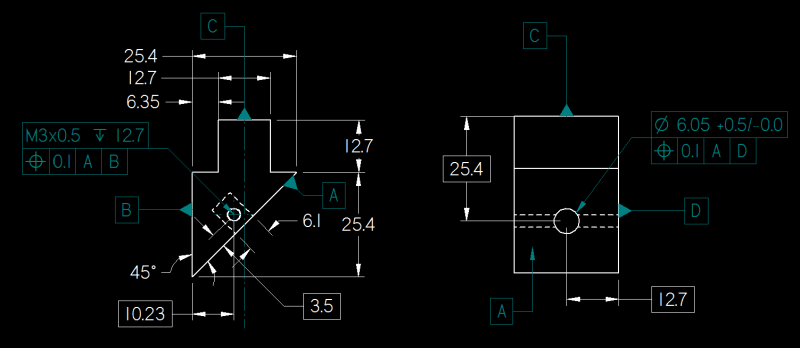sammcc
Aerospace
- Jan 21, 2013
- 103
Hi all,
I am a novice with regards to the proper application of GD & T.
I have attached a drawing of a simple part I have added it to- where previouly it was dimensioned without it.
Can you give me some feedback with regards to the application of the symbols I have used.
I am working to ASME Y14.5 and in units are inches.
Thanks
I am a novice with regards to the proper application of GD & T.
I have attached a drawing of a simple part I have added it to- where previouly it was dimensioned without it.
Can you give me some feedback with regards to the application of the symbols I have used.
I am working to ASME Y14.5 and in units are inches.
Thanks


![[wink] [wink] [wink]](/data/assets/smilies/wink.gif) ) are for mounting then you should be looking at the floating faster formula or fixed faster formula (appendix B), as appropriate, to select the required position tolerance. Also, you may need to use compound position to refine the orientation error of these holes for proper function.
) are for mounting then you should be looking at the floating faster formula or fixed faster formula (appendix B), as appropriate, to select the required position tolerance. Also, you may need to use compound position to refine the orientation error of these holes for proper function.